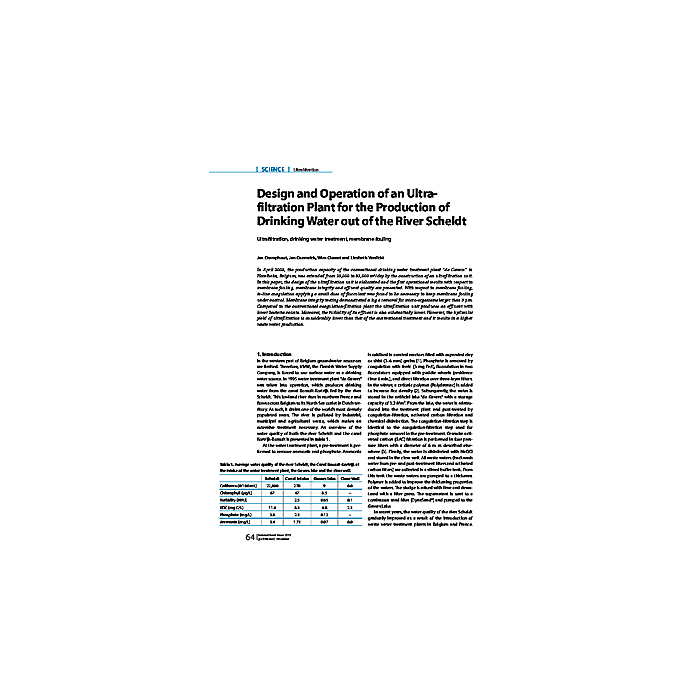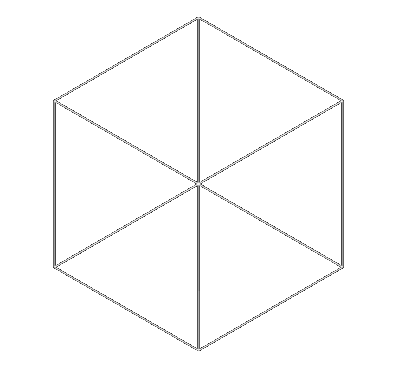Design and Operation of an Ultrafiltration Plant for the Production of Drinking Water out of the River Scheldt
4,90 €
Auf Lager
Artikelnummer
05399_2011_SP1_04
In April 2009, the production capacity of the conventional drinking water treatment plant "de Gavers" in Harelbeke, Belgium, was extended from 25,000 to 32,000 m³/day by the construction of an ultrafiltration unit. In this paper, the design of the ultrafiltration unit is elaborated and the first operational results with respect to membrane fouling, membrane integrity and effluent quality are presented. With respect to membrane fouling, in-line coagulation applying a small dose of flocculant was found to be necessary to keep membrane fouling under control. Membrane integrity testing demonstrated a log 4 removal for micro-organisms larger than 3 µm. Compared to the conventional coagulation-filtration plant the ultrafiltration unit produces an effluent with lower bacteria counts. Moreover, the turbidity of its effluent is also substantially lower. However, the hydraulic yield of ultrafiltration is considerably lower than that of the conventional treatment and it results in a higher waste water production.
| Autoren | Jan Cromphout/Jan Coemelck, Wim Closset and Liesbeth Verdickt |
|---|---|
| Erscheinungsdatum | 30.06.2011 |
| Format | |
| Zeitschrift | gwf - Wasser|Abwasser - Special 1 2011 |
| Verlag | DIV Deutscher Industrieverlag GmbH |
| Sprache | English |
| Seitenzahl | 6 |
| Titel | Design and Operation of an Ultrafiltration Plant for the Production of Drinking Water out of the River Scheldt |
| Beschreibung | In April 2009, the production capacity of the conventional drinking water treatment plant "de Gavers" in Harelbeke, Belgium, was extended from 25,000 to 32,000 m³/day by the construction of an ultrafiltration unit. In this paper, the design of the ultrafiltration unit is elaborated and the first operational results with respect to membrane fouling, membrane integrity and effluent quality are presented. With respect to membrane fouling, in-line coagulation applying a small dose of flocculant was found to be necessary to keep membrane fouling under control. Membrane integrity testing demonstrated a log 4 removal for micro-organisms larger than 3 µm. Compared to the conventional coagulation-filtration plant the ultrafiltration unit produces an effluent with lower bacteria counts. Moreover, the turbidity of its effluent is also substantially lower. However, the hydraulic yield of ultrafiltration is considerably lower than that of the conventional treatment and it results in a higher waste water production. |
Eigene Bewertung schreiben


